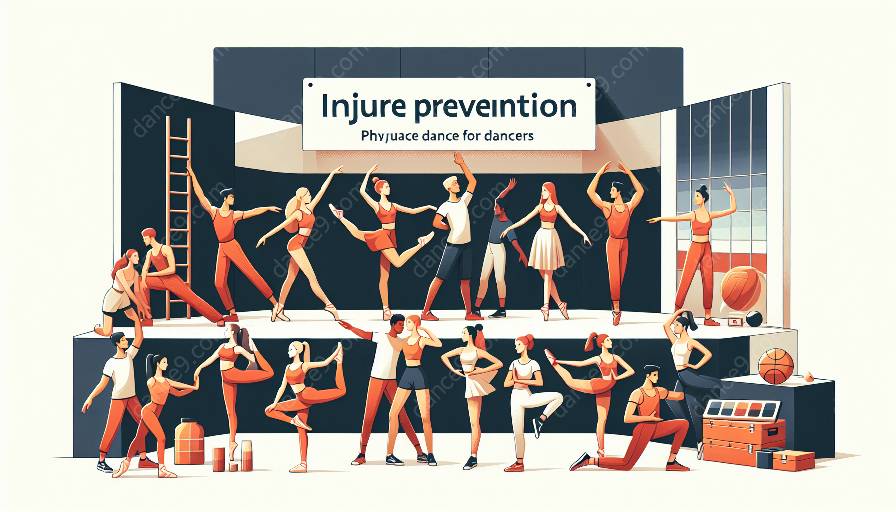Dancing is a physically demanding art form that requires strength, flexibility, and endurance. Dancers often push their bodies to the limit, and this can lead to fatigue and increased risk of injury if not managed properly. In this comprehensive guide, we'll explore how dancers can recognize the signs of fatigue and prevent injuries associated with exhaustion, while also maintaining their physical and mental health.
Recognizing the Signs of Fatigue
It's important for dancers to be mindful of the signs that indicate their bodies are fatigued. Some common signs of fatigue may include:
- Feeling unusually tired, both physically and mentally
- Experiencing muscle soreness that persists over time
- Noticing a decrease in flexibility or range of motion
- Difficulty focusing or concentrating during rehearsals or performances
- An increase in irritability or mood swings
By being aware of these signs, dancers can take proactive steps to address their fatigue before it escalates into a more serious issue.
Preventing Injuries Associated with Exhaustion
Exhaustion and fatigue can significantly increase the risk of injury for dancers. Here are some key strategies to prevent injuries associated with exhaustion:
- Rest and Recovery: Dancers should prioritize sufficient rest and recovery time between intense training sessions or performances. Adequate sleep, rest days, and relaxation techniques are essential for allowing the body to recover.
- Proper Nutrition: A well-balanced diet that provides the necessary nutrients and energy is crucial for dancers to sustain their physical demands. Proper hydration and fueling the body with adequate nutrients can help prevent fatigue-related injuries.
- Listen to Your Body: Dancers should pay attention to their bodies' signals and not push through excessive fatigue. Recognizing when it's necessary to take a break or modify their training can prevent overuse injuries.
- Cross-Training: Engaging in cross-training activities, such as strength training, yoga, or Pilates, can help improve overall strength and flexibility, reducing the risk of injuries from repetitive dance movements.
By implementing these injury prevention strategies, dancers can minimize the risk of exhaustion-related injuries and maintain their physical well-being.
Physical and Mental Health in Dance
Physical and mental health are interconnected aspects of a dancer's overall well-being. It's essential for dancers to prioritize both aspects in order to sustain a long and successful dance career.
Physical Health
Physical health encompasses the body's strength, flexibility, endurance, and overall physical condition. Dancers can maintain their physical health through:
- Proper Warm-up and Cool-down: Performing dynamic warm-up routines and incorporating cooldown exercises can help prevent muscle strain and minimize the risk of injuries.
- Regular Body Maintenance: Seeking regular massages, physical therapy, and other bodywork therapies can aid in alleviating muscle tension and preventing chronic injuries.
- Professional Supervision: Working with qualified coaches, trainers, and healthcare professionals can ensure that dancers receive appropriate guidance and support for their physical development and injury prevention.
Mental Health
Mental health plays a crucial role in a dancer's ability to perform at their best. Managing stress, anxiety, and maintaining a positive mindset are essential for sustaining mental well-being. Dancers can nurture their mental health through:
- Stress Management Techniques: Practicing relaxation techniques, mindfulness, and meditation can help reduce stress levels and promote mental clarity.
- Seeking Support: It's important for dancers to have access to mental health resources, such as counseling or therapy, to address any emotional or psychological challenges they may face.
- Work-Life Balance: Finding a healthy balance between dance commitments and personal life is vital for preventing burnout and maintaining overall mental wellness.
By prioritizing both their physical and mental health, dancers can create a comprehensive approach to sustaining their well-being and optimizing their performance.
Conclusion
Recognizing the signs of fatigue, preventing injuries associated with exhaustion, and maintaining physical and mental health are essential components of injury prevention for dancers. By being proactive and attentive to their bodies' needs, dancers can minimize the risk of fatigue-related injuries and promote their overall well-being, ensuring a long and successful dance career.


































